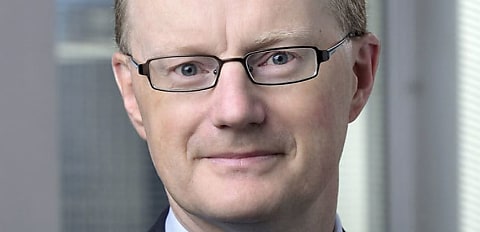While opting for its eighth consecutive rate hike on Tuesday (6 December), the Reserve Bank of Australia (RBA) surprised market pundits by failing to scrap the words “expects to increase” from its forward-looking forecast, signalling that it will keep its foot on the gas in 2023.
Namely, earlier this week, Commonwealth Bank’s (CBA) head of Australian economics, Gareth Aird, predicted governor, Philip Lowe, would replace “expects to increase” with “likely” or “willing to” increase interest rates further, signalling that further policy tightening in 2023 is not locked in.
However, Dr Lowe surprised to the downside, insisting that: “The board expects to increase interest rates further over the period ahead, but it is not on a pre-set course”.
As such, less than a couple of hours after the RBA delivered its final rate decision for the year, CBA announced it was revising its terminal rate to the upside and taking it to 3.35 per cent.
“We had expected the governor would change the RBA’s forward guidance more significantly,” Mr Aird said on Tuesday (6 December).
“Given this change was not made we have shifted our risk case to our base case and now see a peak of the cash rate of 3.35 per cent to be reached in February 2023. The risk sits with a peak in the cash rate of 3.6 per cent.”
Mr Aird however acknowledged that the return of the words “pre-sat course” — which were missing in the RBA’s last two statements — could indicate “a greater degree of flexibility in the tightening cycle from here”.
“It strengthens the likelihood of the RBA pausing in their tightening cycle in early 2023,” the economist said.
ANZ too drew attention to the return of the “not on a pre-set course” paragraph. According to its analysis, this emphasises that the RBA’s policy steps from here will be data-dependent on a month-by-month basis.
“The RBA will pause if the data provide an opportunity, but it needs to be a credible pause. Further deterioration in the global data or marked weakness in consumer spending locally could be the trigger,” said head of ANZ economics, David Plank.
Conversely, Mr Plank and ANZ think inflation and wages growth will prove to be too high for the RBA to stop hiking anytime soon.
“We expect a 25bp increase in February, after the Q4 CPI and with the extension of the RBA’s forecasts out to mid-2025 still expected to show inflation at 3 per cent or higher,” Mr Plank said.
“Wage data in mid-February should then make the case for another 25bp in March. The calendar provides space for a pause in April, before the Q1 CPI data are released ahead of the RBA’s May meeting, where we expect a final 25bp rate hike.”
As such ANZ’s terminal rate has reached 3.85 per cent.
AMP’s Shane Oliver also believes the return of the now infamous “pre-set course” wording is a clear message.
In his response to the RBA’s announcement, Dr Oliver said: “The RBA’s bias remains hawkish, restating that ‘the board expects to increase interest rates further over the period ahead’, but it added the qualifier ‘that it is not on a pre-set course’.
“While it has said this before in other commentary, its addition to the post meeting statement makes it sound a little bit less hawkish and it more clearly paves the way for a pause.
“In summary, we see the RBA as being at or close to the peak on rates. Our base case is that we are now at the peak, albeit with the high risk of one final 0.25 per cent hike to 3.35 per cent early next year”.
Unlike the banks, Treasurer Jim Chalmers drew attention to how the RBA’s latest rate hike could impact Australians and took the opportunity to emphasise the central bank’s independence and therefore distance the government from its latest decision, which is likely to hit many Aussies hard just weeks before Christmas.
“The full impact of these interest rate rises from our own independent central bank are obviously still to be felt. And the magnitude of that impact and the timing of that impact is still in many ways uncertain,” Dr Chalmers said.
“These interest rate rises are already having harsh and heavy consequences on a lot of household budgets and on a lot of mortgage repayments, but the full impact of these rate rises is still to be felt in the economy.”
The 3 per cent (or 300-bp) increase in the cash rate over the eight months since April now exceeds the 1994 tightening cycle and equals the 2002–08 tightening cycle, which amounted to 300 bps but spread over 71 months.
